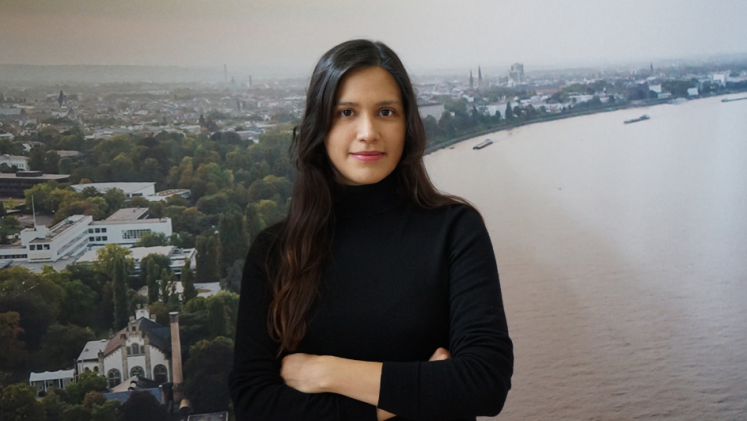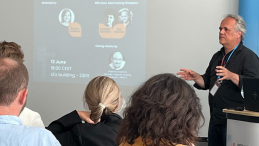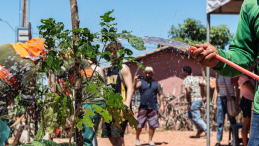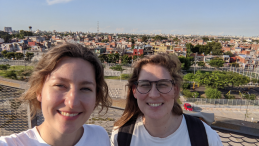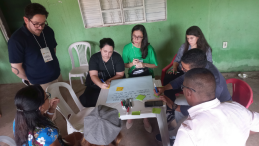For her research with Transformative Urban Coalitions (TUC), Alejandra Ramos-Galvez uses innovative approaches to study perceptions conveyed through visual narratives on transformation towards inclusive, resilient and sustainable urban development. As part of the UNU-EHS Urban Futures and Sustainability Transformation (FAST) division, she performed a photo competition analysis and drafted a scientific publication about the actions taken by local actors worldwide to make their cities more sustainable. Alejandra was keen to explain her research approaches and the role of art in her work in light of World Art Day.
In relation to your research, what is the role of art in supporting communities to create more sustainable and liveable cities for all?
Art is the manifestation of a need to communicate and a way to express ourselves. It can therefore reveal a lot regarding people’s perception of certain concepts. For example, for TUC, we organized a photo contest on “Co-creating the cities we deserve” and asked people to showcase activities that are contributing to zero carbon and more inclusive and sustainable cities. Cities contribute to 75 per cent of global CO2 emissions, highlighting the urgent need for sustainable urban development. Achieving zero carbon emissions requires a socially just transformation that prioritizes the well-being of citizens and communities. Sharing compelling narratives can help raise awareness and foster more ambitious climate action and tell us about people’s current perception of what that looks like. The pictures that were submitted reflected many urban environments. Some of them showed the contrast between green dense settlement landscapes, whereas others depicted the joy people radiated while working to improve sustainability within their cities. Such aspects are usually lost in non-visual data sets and are therefore extremely valuable.
How does this facilitate systemic and just transformations in cities?
Photographs are more than lists of parameters that are either being met or not met. Instead of quantitative indicators, they provide data in a different way. Historically, photographs serve to document and register. They are testimonies through which we appreciate people, places and actions, as visual images often affect people. They leave imprints and have impacts on perceptions – and, in certain cases, have even helped to enhance situations in different contexts. For example, some photographs from the competition depicted contexts in which poor waste management in cities provided opportunities for improvement while also addressing the health risks associated with waste management activities.
These characteristics combined provide a more holistic approach to understanding cities. Traditionally, research often focuses on two conventional approaches: quantitative and qualitative methods. Our innovative approach offers the opportunity to study the complexity of human experiences in a new light, shifting attention to people’s inner dimensions. In that sense, art connects to those dimensions in a way that can also help achieve sustainability goals, because these inner dimensions reflect our intrinsic motivations for protecting and transforming our environment.
In our research we aim to discover the different forms of climate action activities people are performing in the parts of the world they call home. Written and visual narratives sometimes show discrepancies or gaps in their accounts. The additional visual aspects photographs provide can, in those cases, often transmit people’s realities, perceptions and experiences where the written data cannot. Additionally, the visual narrative might inspire and move others into taking climate action in their own cities. This form of data collection therefore allows us to give something back to those who share their information and input, underscoring the value of exploring different research methods.
To what extent does art play a role in your own life?
I am an architect by profession, and art always comes back in one form or another: through work, through music or through movies, for example. Art does not have to be understood, but it should make you feel something. As soon as it does, it awakens something that helps to connect you to your inner self.

